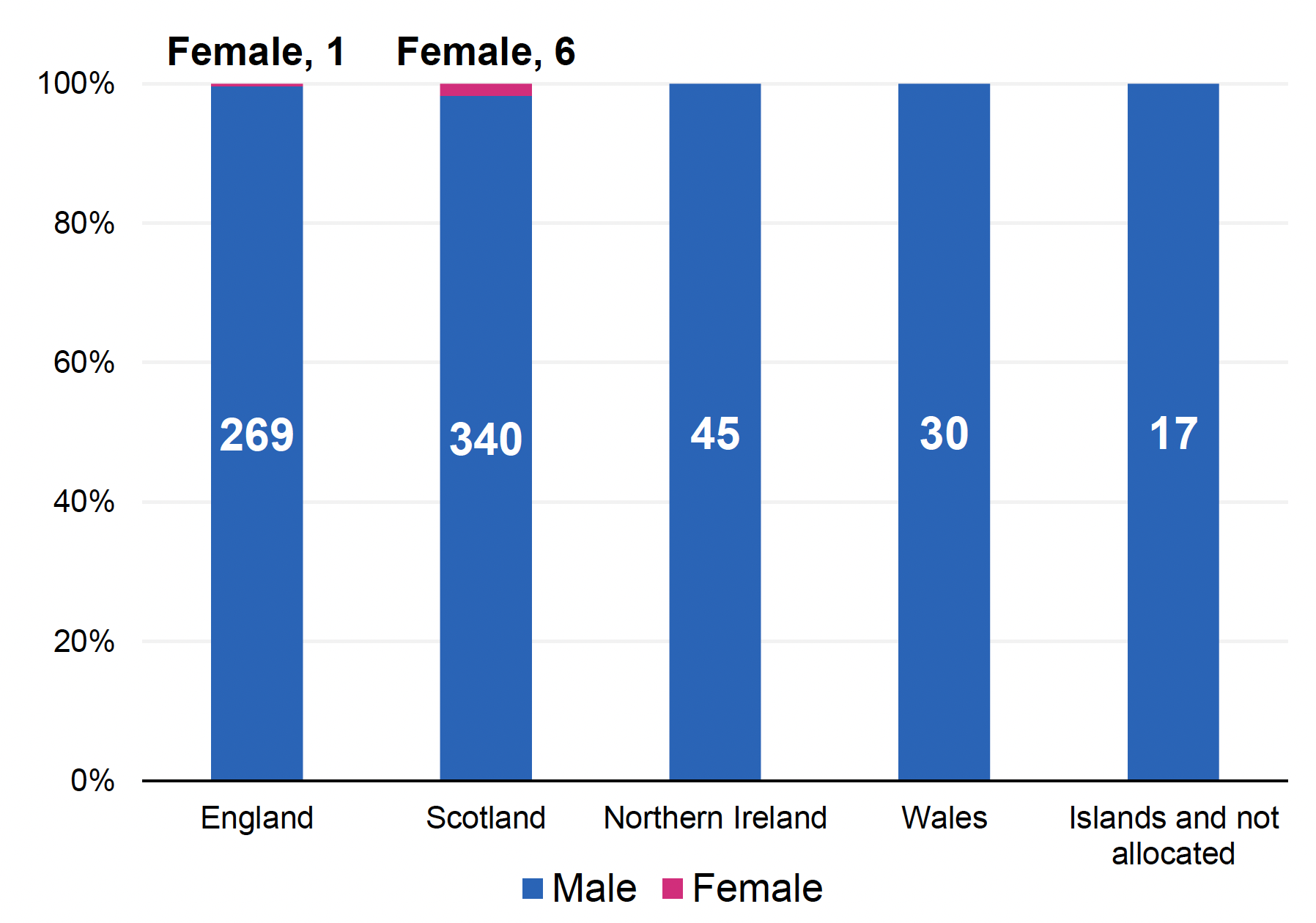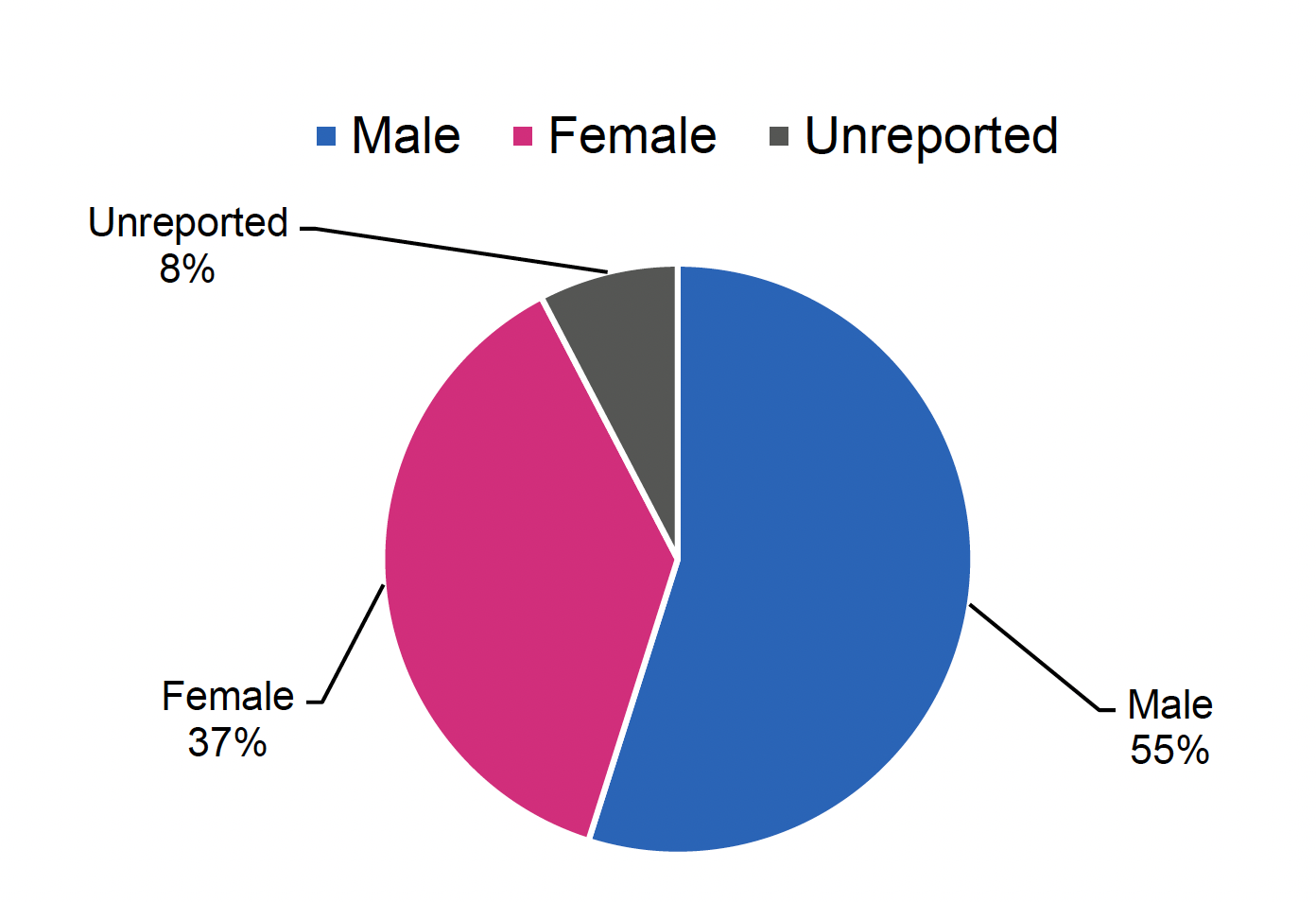Women in Scottish fisheries: literature review
Findings from a review of research literature, case studies and examples of good practice from Scotland and beyond, alongside existing government strategies, to provide insights into challenges and opportunities presented for women in Scottish fishing.
3. Current Context
Tackling inequality is a top priority for Scottish Ministers and the theme is evident across much of the Scottish Government's work, such as the current Programme for Government and the National Performance Framework. Women in fisheries are not explicitly included in these papers, however, Scotland's Fisheries Management Strategy 2020-2030[1] supplements this by underlining the need to promote involvement across equalities groups in fisheries and fishing communities.
Employment in the fishing fleet surveys show that women are rarely involved in offshore fisheries work, but often undertake onshore work in administration and seafood processing. Conversations with surveyors indicate that women may be underrepresented through these surveys because there are no explicit questions about onshore employment in firms, which may disproportionately obscure the involvement of women. The value of unpaid work by women in fisheries is difficult to quantify so it is absent from most statistical reports. This highlights the need for further evidence.
This section outlines existing policies and reports which describe the present situation of women in fisheries in Scotland. It begins by situating the topic within the current Programme for Government (ScotGov, 2021), the National Performance Framework (ScotGov, 2021) and Scotland's Future Fisheries Management Strategy (ScotGov, 2020), which emphasise the need for equality, fairness and sustainability in marine and agricultural sectors. It follows by summarising relevant statistics from Seafish fleet employment surveys (2018; 2021) and draws on reports from most recent UK studies on women in fisheries produced by Defra (2010) and Gustavsson et al (2020) respectively.
Policy and legislative context
The 2010 Equalities Act provides the broader legislative framework for achieving a more equal and equitable society which is as central to the work of Scottish Government. The recently published "A fairer, greener Scotland, programme for government (2021-2022)" builds on this, specifically in relation to rural economy and food production.
The Programme for Government highlights the importance of supporting women in agriculture, through training opportunities, access to land, and improved rural childcare facilities. It does not explicitly discuss women in fisheries, but it does emphasise the need to create a strong marine economy, sustainable aquaculture, and develop a strategy for seafood. While the explicit link may be absent, the two topics are closely interconnected, and literature suggests that jointly addressing equality and sustainability can be a productive way of improving the industry on the whole (Gustavsson, 2020). Even though some needs of women in agriculture and fisheries intersect, including fisheries and coastal communities more explicitly in future government frameworks would ensure their specific needs are addressed.
Equalities in fisheries are discussed in "Scotland's Fisheries Management Strategy (SFFMS) 2020-2030(2020) Equality Impact Assessment". This key document acknowledges that the role of women in fisheries is significant but often underappreciated. A key aim of the strategy is to "seek to recognise the important role that all parts of society make to the fishing industry, and to promote involvement across all genders and equalities groups in a positive and inclusive way" (SFFMS, 2020: 18). More broadly, equality is a key priority of Scotland's National Performance Framework (2021) which promotes "reducing inequalities and giving equal importance to economic, environmental and social progress". Again, fisheries are not directly discussed. However, achieving the goal of "quality jobs and fair work for everyone" (2021) in fishing communities directly translates to supporting women and providing them with opportunities and skills in equal measure to their male counterparts.
These overarching aims can push the fishing industry towards creating better conditions for women considering a career in fisheries and those already working in the sector if appropriate actions are taken in practice.
Summary of recent reports
Quantitative data on employment in the sector is gathered through Seafish surveys. Qualitative information is gathered through various research projects, such as "Women-Fisheries" (2019) and DEFRA's "Women in Fisheries"(2010). They are all UK-wide and little data specific to Scotland are available, highlighting an evidence gap for both quantitative and qualitative data in the Scottish context. Existing data show a stark contrast between representation of women in onshore and offshore employment (figures 1 and 2).


Out of 707 fisheries employers surveyed in the "2018 Employment in the UK fishing fleet survey" (Seafish, 2018), there was one female deckhand, 4 women in onshore positions and 2 women vessel owners, equating to approximately 1% of the surveyed fisheries workers (down from 2% in 2017, but no Scotland-specific data available)[2]. Through a conversation accompanying this project, Seafish have noted that women could be underrepresented through the surveying process as surveyed skippers have tended to under report onshore staff who are more likely to be women. The percentage of women working in fisheries would likely be higher if a survey specific to onshore work was conducted. For instance, the data from the Seafish (2021) survey of employment suggest that 37.5% of employees in Scottish seafood processing are women. Similar data for fishing firms and fisheries organisations would be useful to capture women employed in administration, sales, and leadership work. Following a comprehensive study of women in UK fisheries, Gustavsson et al (2020) estimate that approximately 15% of workers in fisheries overall are female.
Focusing primarily on England (with a few Scottish respondents) DEFRA's "Women in Fisheries" project report (2010) echoes many of these statistics. Though somewhat dated, it is useful for its breakdown of women's involvement in different parts of the sector. It highlights that whether working on vessels or in administration, women often feel they have to work twice as hard as men to gain respect in the industry and are often neglected in policy discussions even though they have opinions and ideas to contribute.
The idea of fishers as male, and the term "fisherman"itself, are still widely used and scarcely challenged. Existing policy directives, alongside recent research (Gustavsson et al, 2020) urge us to consider and contest the perception of fisheries as a male dominated industry by looking at the current situation of women's employment in the sector, paying attention to their contributions; paid and unpaid, offshore and onshore.The "Women-Fisheries" (2020) project describes how women's work is often less visible as it takes place onshore, in catch processing, sales, and administration (Petterson, 2019). Through the years, reports show that women in the UK and beyond are significantly involved in fisheries and undertake much of the unpaid work in fishing communities, such as net mending, childcare, homemaking, and other community-oriented labour (Watch, 2020; Power, 2000). The tendency of their work to be domestic and mostly taking place onshore can lead to economic inequalities within families and communities where men, as"fishermen", are often representing the fishing industry in more formal reports and statistics. It is important to consider how this discrepancy between the formalised employment of men and the tendency of women to have more informal, unpaid contributions might lead to other social inequalities, through men having greater control over finances and more decision making power both within the industry and in fishing communities more generally.
Covid-19
Women's experiences of employment in fisheries should be contextualised within current broader changes in the Scottish fishing industry affected by the Covid-19 pandemic, and by Brexit. These developments brought on challenges in the employment process for non-UK fishers, increased health and safety concerns, changed food production and processing chains, and altered the demands of the international seafood market (Ruiz-Salmon et al, 2021).
The challenges brought on to fisheries by Covid-19 make it all the more pertinent to enact changes in accordance with the Scottish Fisheries Management Strategy (SFFMS) which states that "We will promote fishing as an attractive and safe career of choice, with a focus on improving safety standards, fair work, supporting new entrants into the sector, and equal treatment regardless of national origin or gender." (p26, 2020). Studies have shown that women have been disproportionately affected during the period of Covid-19 restrictions, often taking on a majority of additional childcare and other caring responsibilities alongside their jobs (Alon et al, 2020; Richardson and Denis, 2020).
As fisheries and the provision of seafood constitutes essential work, women who have continued to work, or those whose spouses are fishers, have had to take on additional responsibilities at a very difficult time (Alon et al, 2020). In cases of furlough, women's work in fisheries is more often irregular and informal, so it is possible some have missed out on furlough compensation. Research has shown that women often take on caring responsibilities as well as the responsibilities of providing supplemental income through casual employment in times of crisis (e.g. financial, health), leading them to put their careers on hold (Maneschy and Alvares, 2005).
More specific information on how women in Scottish Fisheries have been impacted through the pandemic would be beneficial when deciding on future actions.
Contact
Email: oana.racu@gov.scot
There is a problem
Thanks for your feedback